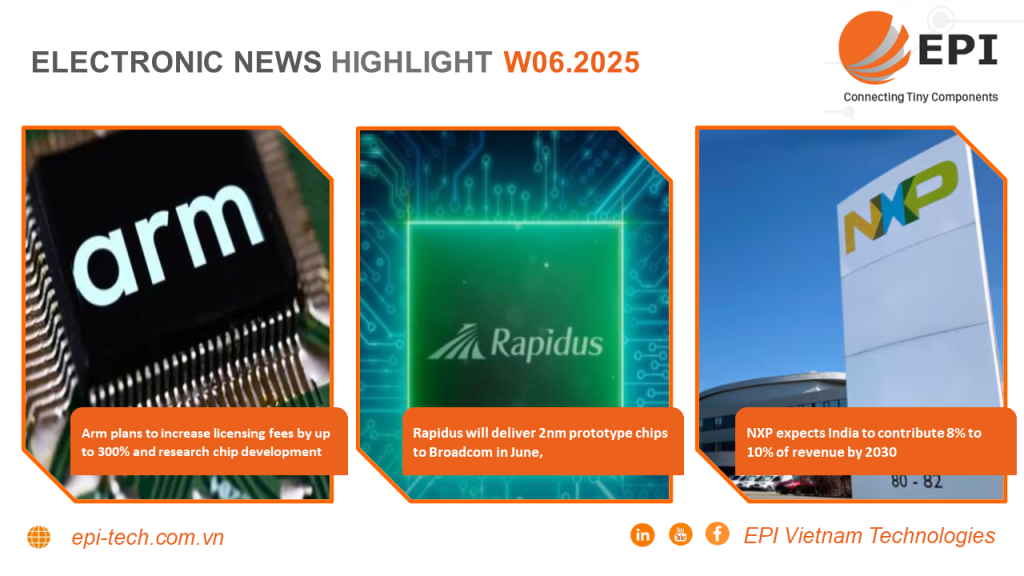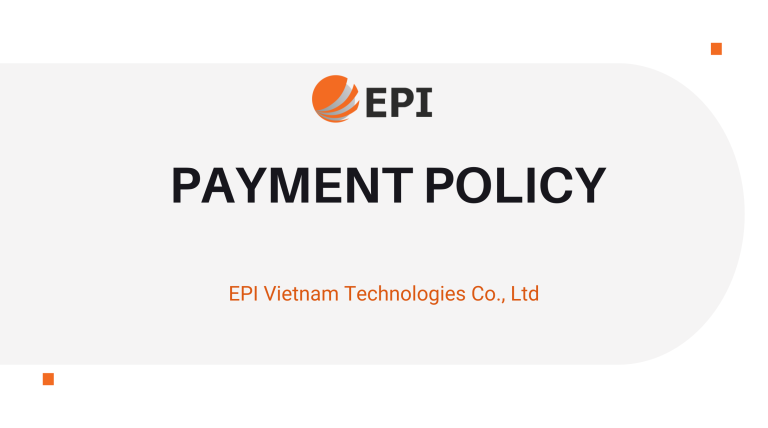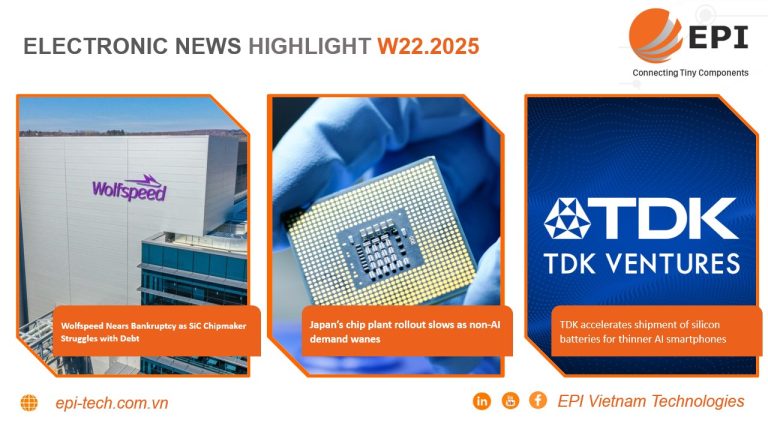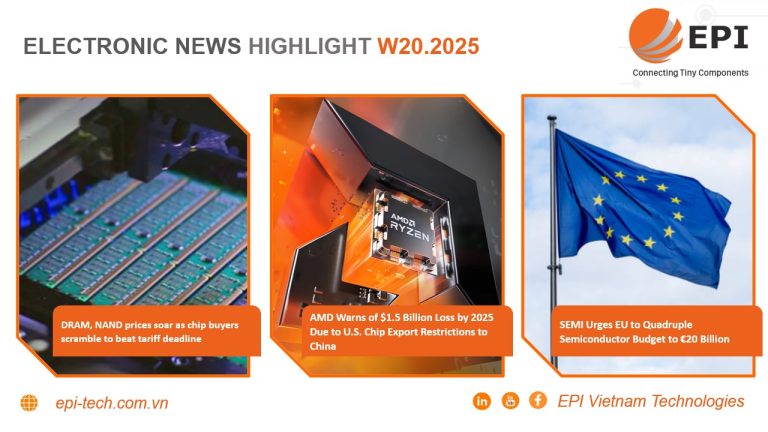ELECTRONIC NEWS HIGHLIGHT W06.2025

1. Arm plans to increase licensing fees by up to 300% and research chip development
Chip technology provider Arm is planning significant adjustments to its business model, including increasing licensing fees by up to 300% and researching proprietary chip design and manufacturing. These moves could have a big impact on the company’s core customer base.
Previously, Arm had earned billions of dollars annually through licensing its technology, which was still relatively small compared to its customers. In 2024, Arm generated $3.23 billion in revenue, while its main customer Apple achieved hardware revenue more than 90 times higher.
To address this gap, Arm has launched the “Picasso” initiative, targeting significant revenue growth over the next decade. The plan includes increasing licensing rates for the company’s newest computer architecture, Armv9. Internal documents from 2019 reveal discussions among Arm executives about a potential 300% fee increase.
In addition to licensing adjustments, Arm is considering venturing into chip design and manufacturing. Company leaders have discussed creating complete chip designs and chiplets—smaller components used in advanced processors. The move sees Arm as a direct competitor to its own customers.
Industry analysts say the prospect of Arm making its own chips could make its customers nervous. Although Arm has not yet entered the chip manufacturing space, this capability has attracted significant industry attention.
Learn more: Arm plans to increase licensing fees by up to 300% and research chip development
2. Rapidus will deliver 2nm prototype chips to Broadcom in June, 2025
Japanese chip foundry startup Rapidus plans to supply 2nm prototype chips to US-based semiconductor company Broadcom in June, thereby showcasing manufacturing capabilities developed through the partnership. technology partner with IBM.
Rapidus is building a wafer manufacturing facility in Chitose, Hokkaido, with groundbreaking expected in August 2023. The company aims to begin mass production of 2nm chips in 2027. However, ultraviolet lithography equipment The company’s (EUV) chip is not expected to reach customers until December 2024, and it’s unclear how complex and advanced the prototype chips delivered in June will be what level?
In addition, the company plans to install the remaining equipment for the second generation GAA process testing line in April 2025 to further enhance production capacity.
Rapidus’ production of 2nm chips is expected to leverage chiplet technology, bringing flexibility to the partnership with Broadcom. Broadcom will evaluate Rapidus’ 2nm process and may assign manufacturing duties to this startup. This potential partnership is important for Rapidus, especially since Broadcom, the second largest semiconductor company by market value after NVIDIA, has stringent technology requirements that will test its ability to by Rapidus.
Delivering the 2nm prototype marks a significant milestone for Rapidus, despite ongoing challenges and production scalability.
Learn more: Rapidus will deliver 2nm prototype chips to Broadcom in June, 2025
3. NXP expects India to contribute 8% to 10% of revenue by 2030
Hitesh Garg, head of NXP India, stated that the company expects the Indian market to contribute 8% to 10% of the company’s revenue over the next three to five years, reflecting the growing focus company into India’s emerging semiconductor market.
Speaking at an industry event in Bengaluru, Garg highlighted the rapid growth of India’s industrial and automotive sectors as a key driver of NXP’s sales in the region. He emphasized, “The next 3-5 years are a critical period for NXP in India and we anticipate generating significant revenue from this market.”
Although NXP does not disclose specific revenue figures from India, reports suggest that India is a fast-growing but still relatively small market for major chip companies. In 2023, NXP reported global sales of $13.28 billion, with nearly a third coming from China and about 30% coming from other Asia-Pacific markets. When asked if expansion in India could offset uncertainties in China, Garg commented, “We have an opportunity here to recover some of the losses from other regions.”
India’s semiconductor market is expected to reach $63 billion by 2026, although the country has yet to produce its first chip. In September, NXP announced plans to invest more than $1 billion in India and double its R&D efforts to take advantage of this growth opportunity.
Learn more: NXP expects India to contribute 8% to 10% of revenue by 2030



 English
English  Tiếng Việt
Tiếng Việt 












